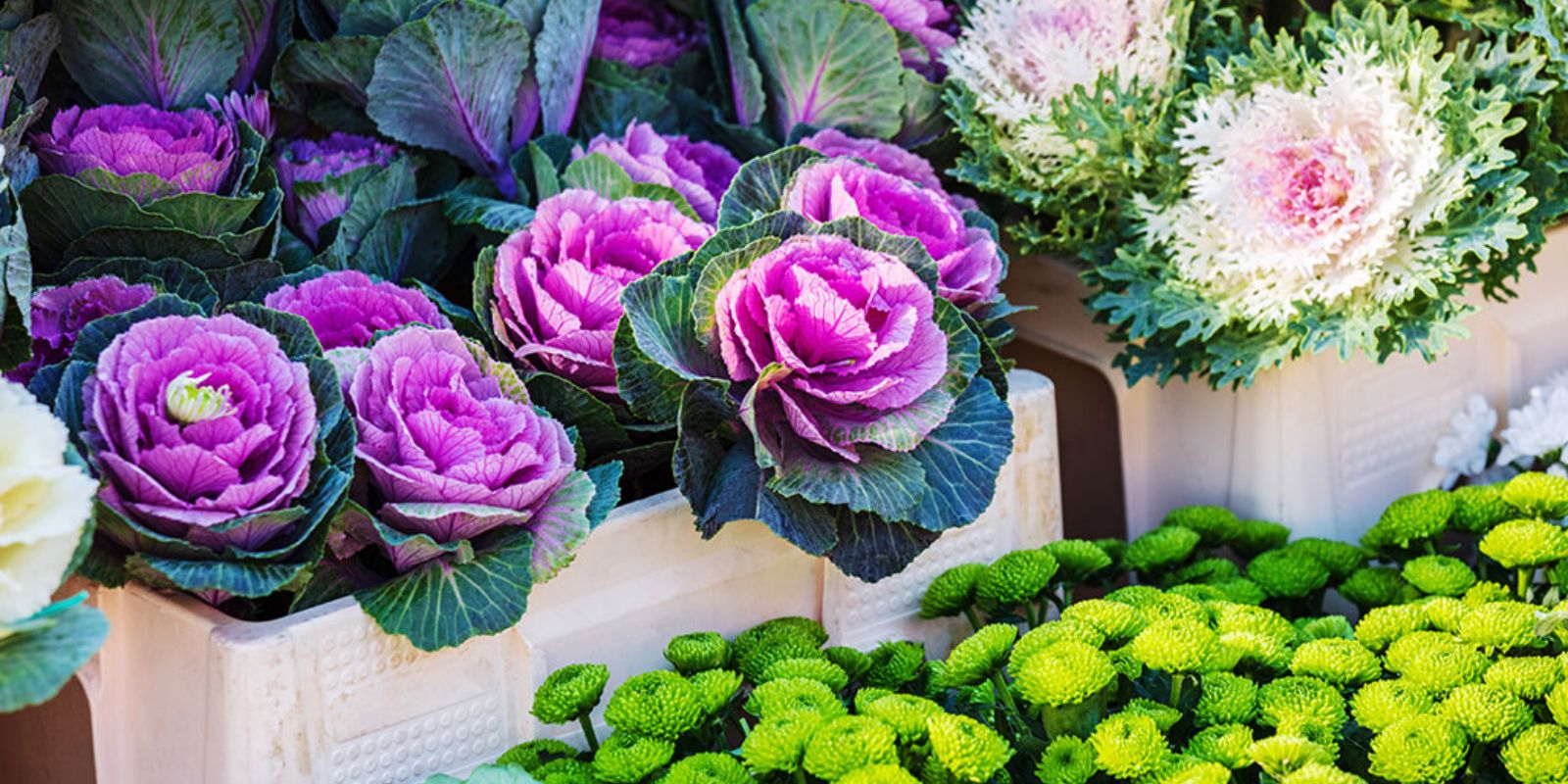Introduction
Flowering kale, also known as ornamental kale or cabbage, is a remarkable plant that brings vibrant color and unique texture to any garden. Unlike traditional leafy greens, flowering kale is primarily grown for its aesthetic appeal, with its stunning rosette of leaves providing a dramatic visual impact. This hardy plant is especially valued in cooler weather and can even withstand light frosts, making it a versatile choice for fall and winter gardens. In this detailed guide, we’ll explore everything you need to know to successfully plant and grow flowering kale, from soil preparation to harvesting tips.
Why Choose Flowering Kale?
Flowering kale stands out for several reasons:
- Aesthetic Appeal: The plant’s colorful, frilly leaves add a splash of vibrant hues—ranging from purple and pink to white and green—to garden beds, containers, and landscapes.
- Seasonal Interest: It thrives in cooler weather, providing visual interest when many other plants are fading.
- Hardiness: Flowering kale can tolerate frost and cold temperatures, extending the gardening season into the colder months.
- Versatility: It can be used in various garden designs, including borders, containers, and as a focal point in winter arrangements.
Step-by-Step Guide to Planting and Growing Flowering Kale
Step 1: Choose the Right Spot
- Location: Flowering kale prefers a sunny or partially shaded spot. It can tolerate some shade, but it performs best with 6-8 hours of sunlight daily.
- Climate: Ideal for cooler climates, flowering kale thrives in temperatures ranging from 45 to 75°F (7 to 24°C). It can handle light frost, which can actually enhance its color.
Step 2: Prepare the Soil
- Soil Type: Select a location with well-drained soil. Flowering kale does not like sitting in waterlogged soil, which can lead to root rot.
- Soil Enrichment: Enrich the soil with compost or well-rotted manure to improve its fertility and structure. This organic matter helps retain moisture while improving drainage.
- pH Level: Aim for a soil pH between 6.0 and 7.0. Test your soil and adjust the pH if necessary with lime or sulfur.
Step 3: Sow the Seeds
- Starting Indoors: Begin seeds indoors 6-8 weeks before the last expected frost. Sow seeds in seed trays or pots filled with a seed-starting mix. Plant seeds about 1/4 inch deep and 1 inch apart.
- Direct Sowing: If starting directly in the garden, wait until the soil temperature is consistently above 50°F (10°C). Sow seeds about 1/4 inch deep and thin to 12-18 inches apart once seedlings emerge.
- Germination: Flowering kale seeds typically germinate in 7-10 days. Keep the soil consistently moist but not waterlogged.
Step 4: Transplant Seedlings
- Timing: Transplant seedlings outdoors when they are 3-4 inches tall and the outdoor temperatures are suitable. Ensure the risk of frost has passed if you started them indoors.
- Spacing: Space plants 12-18 inches apart to allow for their mature size and to promote good air circulation.
- Planting: Dig a hole slightly larger than the root ball, place the seedling in the hole, and cover with soil. Water thoroughly to settle the soil around the roots.
Step 5: Watering and Fertilizing
- Watering: Keep the soil consistently moist, especially during dry periods. Flowering kale prefers evenly moist soil but can tolerate short periods of dryness. Avoid waterlogging.
- Fertilizing: Apply a balanced, all-purpose fertilizer every 4-6 weeks to encourage healthy growth. Follow the manufacturer’s instructions for the correct dosage.
- Mulching: Apply a layer of mulch around the base of the plants to help retain moisture and regulate soil temperature.
Step 6: Maintain and Harvest
- Weeding: Regularly remove weeds that compete for nutrients and water. Weeds can also harbor pests and diseases.
- Pest Control: Monitor for common pests such as aphids and cabbage worms. Use organic pest control methods like neem oil or insecticidal soap if needed.
- Harvesting: Harvest leaves when they reach the desired size. Flowering kale is usually grown for its decorative appeal, so you may not need to harvest for consumption. Simply enjoy its beauty as it matures.
- Winter Care: In regions with harsh winters, cover the plants with mulch or frost cloth to protect them from extreme cold.
Design Ideas for Using Flowering Kale
- Container Gardens: Flowering kale looks striking in containers, either alone or combined with other cool-weather plants like pansies and violas.
- Borders and Beds: Use flowering kale to create vibrant borders or as a centerpiece in garden beds. Its bold colors contrast beautifully with other fall and winter plants.
- Winter Arrangements: Incorporate flowering kale into seasonal arrangements or as part of festive decorations for the winter holidays.
Tips for Success
- Regular Maintenance: Regularly check plants for signs of stress, pests, or disease. Address issues promptly to maintain plant health.
- Seasonal Adjustments: Adjust watering and care practices based on seasonal changes. In cooler weather, be mindful of the plant’s need for less frequent watering.
- Enjoy the Process: Flowering kale is as much about the aesthetic experience as it is about the growing process. Take pleasure in its beauty and the color it brings to your garden.
Conclusion
Flowering kale is a fantastic addition to any garden, offering both visual appeal and resilience in cooler weather. By following these steps, you can successfully plant and grow this ornamental plant, adding a burst of color and texture to your outdoor space. Whether you’re designing a fall garden or enhancing your winter landscape, flowering kale provides a stunning focal point that will brighten up your garden all season long. Embrace the joy of gardening and make your space vibrant with the beauty of flowering kale! 🌿💐 #FloweringKale #GardenDesign #OrnamentalPlants #CoolWeatherGardening #DIYGarden #SeasonalColor #GardenInspiration #HomeGardening #WinterBeauty #GrowYourOwn

